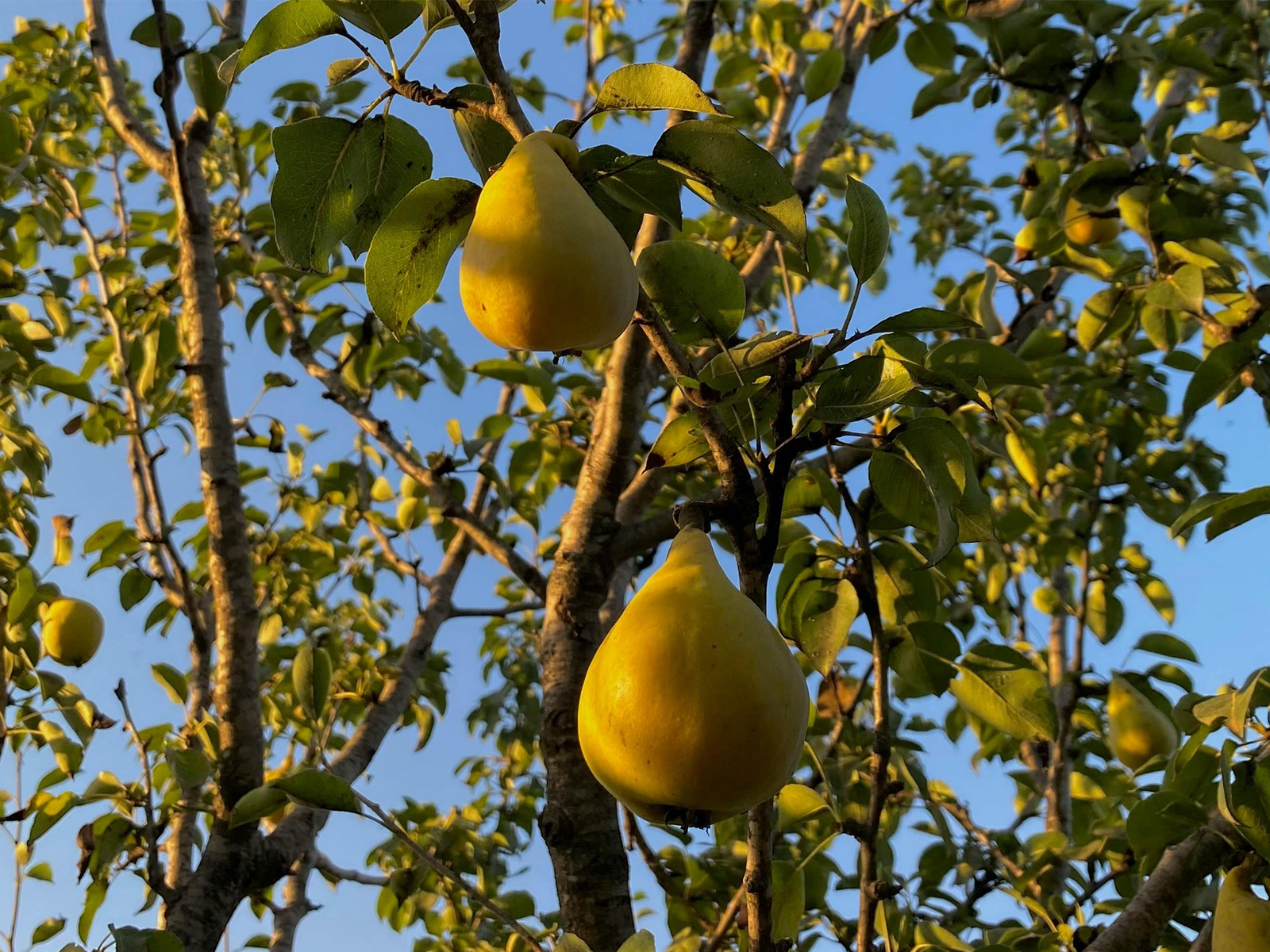The Business of Pear Farming
Beyond the glistening skin and juicy sweetness, pears hold a captivating story – a tale of perseverance, flavor, and a multi-billion dollar industry. From sun-drenched orchards brimming with delicate blossoms to bustling packing houses and supermarket shelves, pear farming weaves together the dreams of growers, marketers, and, of course, pear enthusiasts. Let’s embark on a journey into this fascinating world, one juicy question at a time.

What is a pear?
Scientifically known as Pyrus communis, pears belong to the Rosaceae family, sharing kinship with roses, peaches, and cherries. This versatile fruit boasts over 3,000 distinct varieties, each offering a unique blend of sweetness, tartness, and texture. Popular classifications include Bartlett (soft and juicy), Bosc (firm and nutty), and Anjou (sweet and crisp), with countless other varieties delighting diverse palates. Pear colors range from the iconic golden yellow to emerald green, blushing red, and even russet brown, adding visual variety to the orchard canvas.

Where do pears come from?
Pears thrive in temperate climates with well-drained soils and distinct seasons. China reigns supreme as the global pear king, producing nearly half the world’s crop. Europe and North America follow closely behind, with Italy, Spain, and the United States being major players. Each region boasts its unique terroir, a combination of climate, soil, and topography, that imbues pears with distinct flavor profiles and characteristics. The Bartlett pears of California, known for their sweetness, stand in contrast to the firmer Comice pears of Italy, highlighting the influence of terroir on pear quality.

What is the global market for pears?
The global pear market, while smaller than its apple and grape counterparts, holds significant value, estimated at over $25 billion in 2022. Fresh pears remain the dominant segment, accounting for approximately 60% of the market. Processed pears, including canned, dried, and juice formats, cater to convenience and diverse culinary uses. Interestingly, pear exports are on the rise, fueled by growing demand in Asian and European markets. Beyond fresh consumption, pears play a role in the beverage industry, with pear juice and perry (pear cider) contributing to the market’s value.

How do you grow pears?
Pear farming demands meticulous care and patient dedication. Establishing an orchard requires careful planning, considering factors like climate, soil suitability, varietal selection, pollination requirements, and irrigation systems. Young trees are lovingly nurtured, pruned, and protected from pests and diseases. Blossom thinning can play a crucial role in ensuring optimal fruit size and quality. Careful monitoring throughout the growing season guarantees the perfect balance of sugar and acidity, creating the perfect bite. Sustainable practices like integrated pest management, water conservation, and organic farming methods are increasingly adopted by pear growers.

How do you harvest pears?
Ripe pears require gentle handling to preserve their delicate flesh and market value. Hand-picking at peak ripeness, typically several months after bloom, minimizes damage and preserves quality. Skilled harvesters assess pears by touch, color, and firmness, ensuring only optimal fruit makes it to the next stage. Mechanized harvesting, while faster, requires careful timing and selection to avoid bruising and maintain desirable quality. Some pear varieties, like Bartlett, are best suited for hand-picking due to their sensitivity.

What can you do with pears?
The pear’s versatility is its strength. They are, of course, beloved fresh fruit, enjoyed whole, sliced, or diced in countless ways. But their culinary journey doesn’t end there. Pears find their way into pies, tarts, and desserts, adding sweetness and a unique texture. The juice industry embraces their natural sugars, transforming them into refreshing beverages and blends. Culinary ingenuity shines in savory applications, with roasted pears adding a touch of sweetness to meats and salads. Even the cores and peels contribute, used for pectin production, composting, or innovative biofuel initiatives.

How do you get started in the pear farming business?
Start by studying your regional climate and soil, then choose pear varieties that thrive there. Secure funding and permits, ensuring you have the legal and financial green light. Next, find the perfect plot of land with well-drained soil and ample sunlight. Plant your pear trees strategically, providing enough space for growth and cross-pollination. Nurture your young trees with water, pruning, and pest control, keeping an eye out for blossom thinning to optimize fruit size. When it’s harvest time, hand-pick those pears at peak ripeness for the best quality. Finally, find buyers or storage solutions to get your delicious pears into eager hands.














